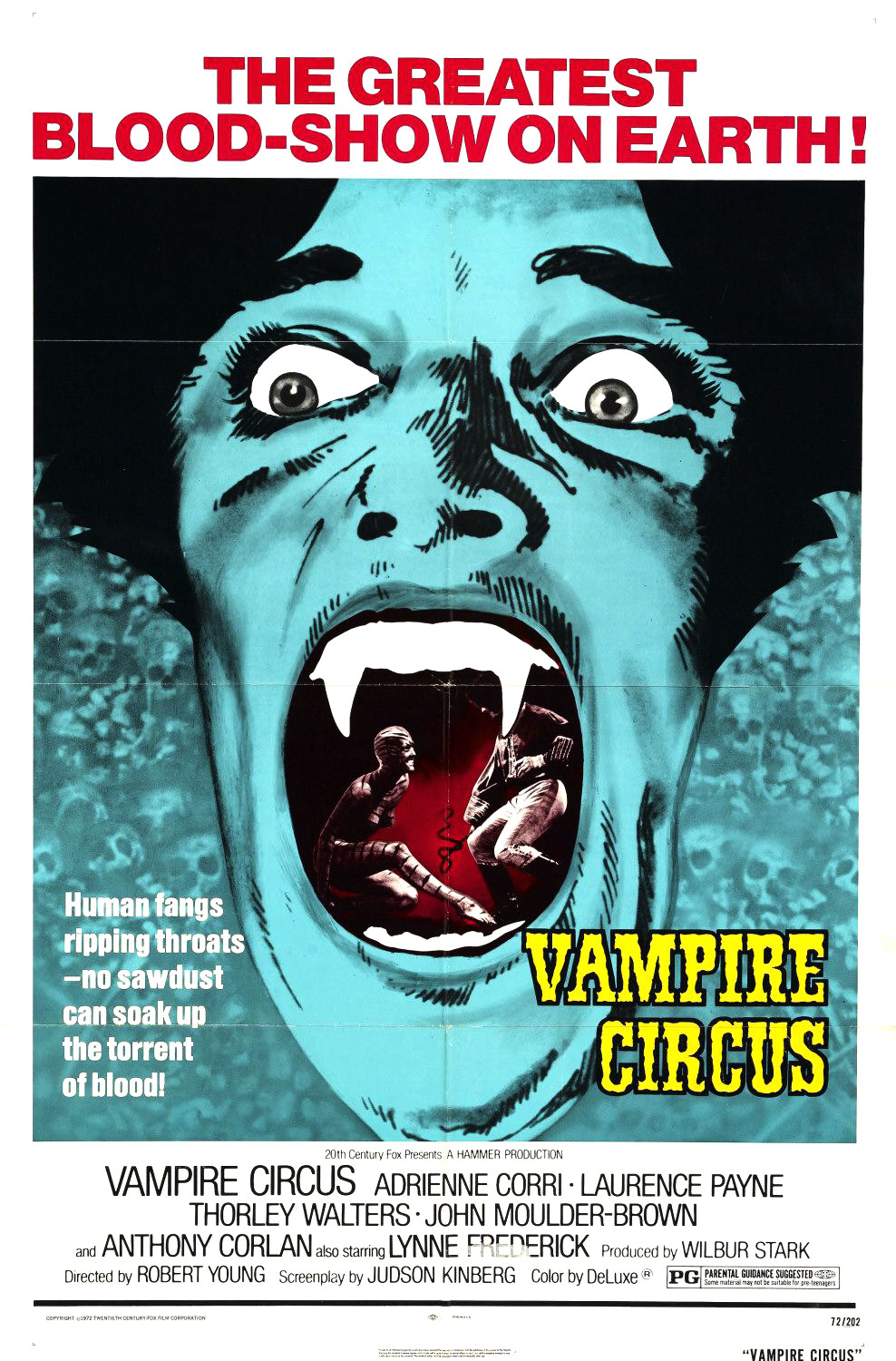Vampire Circus didn’t make the cut two years ago for the October Hammershow, but now I wish it had. I watched some real stinkers that month, and Vampire Circus would have been a worthy replacement.
Hammer released Vampire Circus in 1972, placing it at the tail end of Hammer’s run. The cracks in Hammer were apparent by then. The formula they had been using for over a decade was showing less and less return at the box office, so Hammer turned to gratuitous nudity and more gore to try and boost sales. It didn’t work. But, even though it seems Hammer was turning somewhat desperate, they were still capable of releasing good horror flicks.
Directed by Robert Young, from a screenplay by Jud Kinberg, Vampire Circus is a gothic horror film that takes place in 19th century Serbia. There, the village of Stetl is being terrorized by the local lord, Count Mitterhaus (Robert Tayman). This isn’t a tale of class struggle, however. Mitterhaus is a vampire, and he’s been feeding on the hapless villagers. One of the villagers, Anna (Domini Blythe), has been luring victims to the count.
But, the villagers have had enough of Mitterhaus’s shenanigans, so they kill him and burn down his castle. Before Mitterhaus expires, he utters a curse on the villagers. They, and all their children, will die to bring the count back to life.
Fast forward fifteen years, and a new menace, in the form of plague, has come to Stetl. As such, the village has been quarantined. Surrounding villages have set up roadblocks on the roads leading out of Stetl, and will shoot anyone who tries to travel to, or flee, the stricken village.
A roaming troupe of gypsy circus performers doesn’t care about the quarantine, however. They travel to the village unimpeded, and set up shop to perform for the villagers’ entertainment. Their unnamed leader is played by fiery-haired Adrienne Corri. She’s  joined by a silent strongman (David Prowse, who was something of a Hammer stalwart in the ’70s), Skip Martin as dwarf clown Michael, twin performers Heinrich and Helga (Robin Sachs and Lalla Ward), and Anthony Higgins as Emil, who can shape-change into a panther.
joined by a silent strongman (David Prowse, who was something of a Hammer stalwart in the ’70s), Skip Martin as dwarf clown Michael, twin performers Heinrich and Helga (Robin Sachs and Lalla Ward), and Anthony Higgins as Emil, who can shape-change into a panther.
During their performances, they go beyond stage magic and into the truly supernatural, yet the villagers don’t bat an eye when they witness what is normally impossible. Of course, the gypsies are not in Stetl for the titillation of the locals. They have come to town to fulfill Count Mitterhaus’s pledge, and resurrect the slain vampire. It is revealed that Emil is a relative of the count, and the twins are his children. As if dealing with the plague isn’t bad enough, the villagers now have a murderous colony of vampires to deal with.
The principle villagers are Thorley Walters as the local burgermeister, Laurence Payne as Professor Müller, John Moulder-Brown as Anton Kersh, and Lynne Frederick as Müller’s daughter, Dora.
This ensemble cast has been assembled to play vampire and victim, evil and its foes. The result is a colorful and imaginative production that is good from beginning to end. A Hammer film requires a substantial suspension of disbelief. The production is never as expansive as its idea, with the most prevalent example of this being the circus. It’s just a handful of wagons and half a dozen performers, and never plays to an audience greater than around thirty principals and extras. Like watching a play, the audience has to do some of the imagining. Viewers today, who have been raised on apocalyptic CGI, will have to use a few more brain cells to fill in the blanks. It’s a small sacrifice to make for such a compelling tale.
Like with other gothic horror of the era, it leans towards overdramatization as part of the effort to make up for small resources, but it’s part of the style, just like the colorful costumes and bombastic score.
Vampire Circus is a fine example of what Hammer was capable of producing. It pays lip service to the trends of the time with the nudity and gore, without ruining what made their formula work. The cast was good top to bottom, bringing just the right amount of stage technique to film. This movie is a fantasy — as far away from the real world as any of Peter Jackson’s Rings movies. It would be difficult to find many better examples of Hammer horror.
